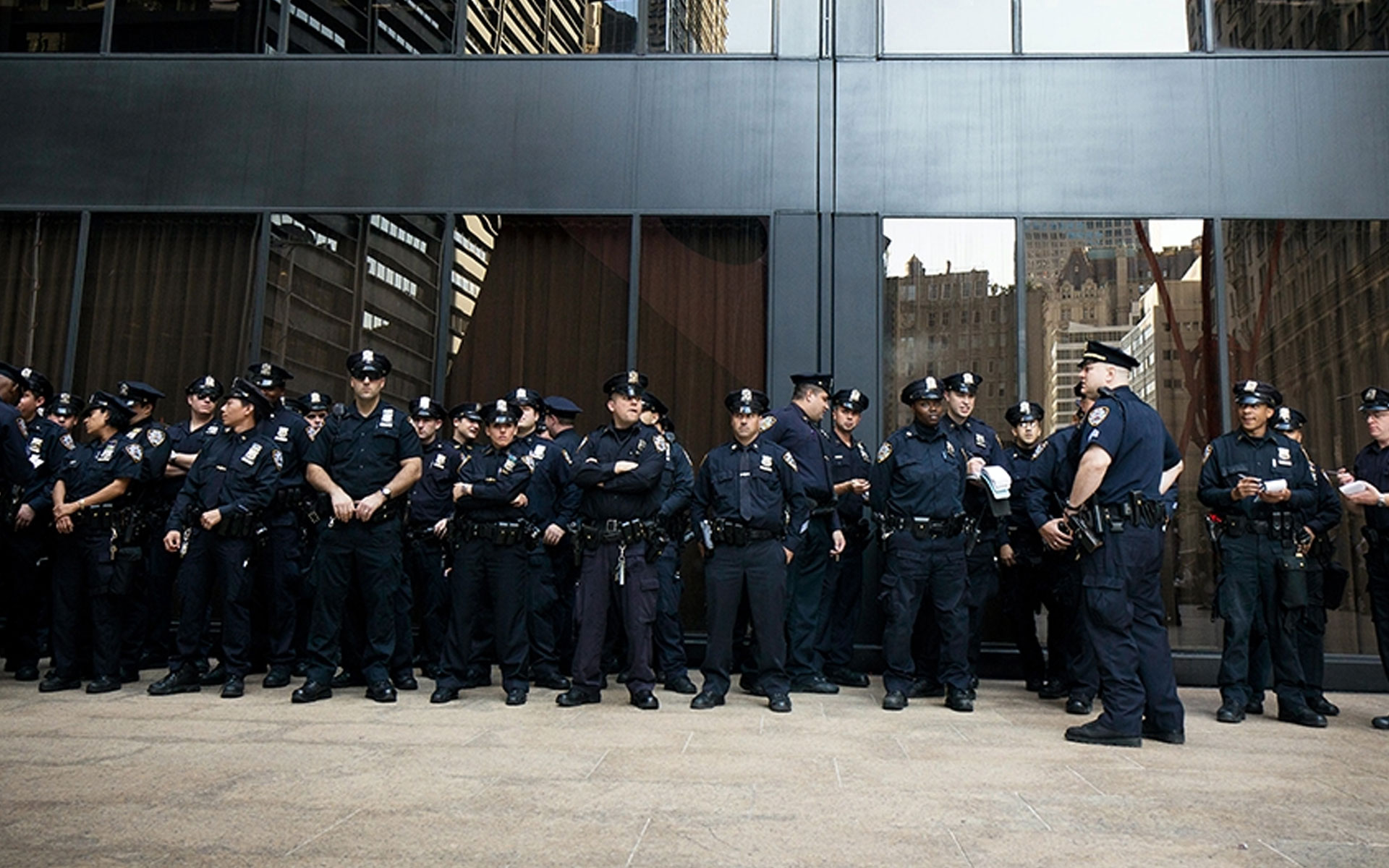In the past few years of the Covid pandemic, many people have left or lost their jobs and sought out new ones. Who has succeeded and who hasn’t depends not only on merit and ability, but on who you know—word-of-mouth is one of the most common ways that people learn about and are encouraged to apply for jobs. And who you know typically reflects your gender, race, and other influential differences that in policy terms have come to be known as markers of diversity.
Subscribe:
Today, organizations are more aware of this than ever before: they’re implementing diversity, equity, and inclusion initiatives and listening to current employees and market and management research that shows a more diverse workforce benefits both organizations and society.
A more complicated question is: what role does gender play in job recruitment and hiring? New research by Desautels Faculty of Management Professor Brian Rubineau shows how gender is a factor in word-of-mouth recruiting, as well as in who actually applies for the job in the first place and who reapplies after they’ve been rejected. Some of his findings surprised him.
His research findings show that gender differences contribute to women’s underrepresentation in certain industry sectors and at certain levels of an organization. In a recent paper examining word-of-mouth job recruitment, Network Recruitment and the Glass Ceiling: Evidence from Two Firms, Rubineau and his co-author Roberto M. Fernandez find that word-of-mouth recruitment can help promote diversity in organizations—if employees who are members of under-represented groups share job information in their social circles—but even so, the benefits of word-of-mouth are unequal across levels of the organization, with lower levels benefiting most from organizational diversity.
Rubineau’s most recent research paper, Reject and Resubmit: A Formal Analysis of Gender Differences in Reapplication and Their Contribution to Women’s Presence in Talent Pipelines, finds that gender differences in job reapplication are an important mechanism of gender segregation, but not in all contexts. When the rejection rates for a position are higher, gender differences in who reapplies increase, meaning that fewer women reapply.
Delve recently spoke with professor Rubineau about his research on the Delve podcast. Listen to the full conversation and read further for a selected Q&A.
Delve: To set the tone for the current state of diversity, equity, and inclusion initiatives in organizations in North America: what initiatives are you seeing in your research and what is currently missing?
Brian Rubineau: I believe organizations are hungry for identifying effective interventions to try to promote diversity. Diversity is an important value and goal for many organizations. And what’s missing are a range of effective tools to try to achieve those diversity goals. One of the things we observe is that organizations tend to grasp onto whatever is being put out there as likely to be effective, even if we don’t necessarily know if it’s effective or not. One good example is diversity training, which tends to be very popular, but the effectiveness is far from established. My research really tries to understand the social processes, the dynamics that influence diversity outcomes and organizations to try to identify what are some policies, interventions, and practices that could be more reliably effective in promoting diversity in organizations.
Delve: In your research paper Network Recruitment and the Glass Ceiling, you and your co-author show that a big part of increasing diversity, equity, and inclusion at work is how people become aware of job positions in the first place. Word-of-mouth is one of the main ways that people learn about jobs. What does word-of-mouth look like in the real world of job recruitment?
Brian Rubineau: Word-of-mouth is the primary way job seekers connect with employers in the labor market, and this is true in the United States and North America broadly. It’s the most common recruiting approach that employers use when there’s a vacancy—it’s very common for employers to ask their current employees to try to identify good people that would be able to fill the vacancies that an organization has. In addition, it’s one of the most common search practices of job seekers—job seekers will talk to their contacts, their own social network and say, “Who do you know that’s hiring? What jobs are available out there?” They use their contacts to try to identify these opportunities. It’s the most common form of job matching that exists in the labor market.
Word-of-mouth is the primary way job seekers connect with employers in the labor market.
Now, this common form of job matching has some important consequences. One of the most reliable findings in social science is that our social contacts tend to resemble ourselves along many different dimensions of similarity: gender, level of education, race, religion, language preference, a whole range of dimensions. Our social contexts tend to be similar to ourselves. And so when organizations that use word-of-mouth practices to try to fill their vacancies it has obvious implications for diversity.
Delve: In your new research on women’s underrepresentation in talent pipelines, what methods did you use to identify the limitations and what did you discover about those limitations?
Brian Rubineau: The initial work that I was doing to try to understand how word-of-mouth recruitment worked along with its relation with the segregation of the labor market—and to try to identify these opportunities to integrate the labor market—was done via a combination of mathematical modeling and computational modeling. The idea that word-of-mouth recruitment was this kind of homosocial reproduction process, I took that seriously and we can study it as a population process. We can look at it like an ecologist might look at dynamics of species in an ecological niche. My research used mathematical models and computational models to look at these population processes to try to identify: where are the opportunities to intervene? What are the levers that you can identify that could help promote diversity through word-of-mouth recruitment?
Then we went out and collected data from several organizations that were using word-of-mouth recruitment for their recruitment policies, whether they were trying to use it to promote diversity or not was largely irrelevant. But we were trying to identify what the effects of the word-of-mouth recruitment were for the demographic composition of the organization. We could follow some organizations over time and see what it was we see what was happening.
The processes were still recreating a glass-ceiling phenomenon.
Delve: You were looking at quite a bit of data to get worthwhile insights. But did your findings align with your expectations?
Brian Rubineau: What we found was a bit surprising. We had slightly contradictory findings. On the one hand, more word-of-mouth recruitment was generating more integration, was desegregating the workforce. But we were finding the strongest effects at the lowest levels of an organization. And thus the least strong effects at the highest levels of the organization. We were finding that to some extent the processes were still recreating a glass-ceiling phenomenon where women appear to have more barriers as they went to higher levels in the organization.
One of the processes that highly influences the gender integrating effects of word-of-mouth recruitment is the fact that not only do people tend to reproduce job candidates who are like themselves, but there’s a level of the organization dynamics that comes into play. When we refer others for job opportunities, we tend to refer others for jobs that are at our level or below. And very rarely do we refer others for job opportunities that are at a higher level than our own job. Then the upper levels of the organization, which tend to be more male dominated than the lower levels of the organization, preserve that male over-representation; it’s more enduring than it is for lower levels of the organization. The integrating effects of word of mouth recruitment are strongest at the lowest level and weakest at the upper level.
Delve: Word-of-mouth helps job seekers get the interview and get in the door to an organization. But before reaching that point, there are barriers to overcome before even applying for the job. There are gender differences between who applies for positions in the first place, who gets rejected, and who resubmits their applications. You and your co-authors dove into these questions in a recent research paper Reject and resubmit: A formal analysis of gender differences in reapplication and their contribution to women’s presence in talent pipelines. What did you find?
Brian Rubineau: Beyond the labor market itself, across a right wide range of realms, there’s this finding that when men and women seek a particular opportunity, and they get rejected, men are more likely to try again for that same opportunity. And women are less likely relative to men to seek that same opportunity. And we’ve seen this in patenting applications. You see this in Kickstarter projects. I see this in grant funding applications. And we see this in the labor market as well. There was a paper even saying that if college students fail a course, there is a gender difference in who tries to retake the course. And so it has an obvious potential implication for women’s under representation in these talent pipelines.
Rejection rates commonly exceed 80% to 90%.
We started out with a mathematical model to try to understand the dynamics of these processes, to try to look for opportunities to intervene, and what might be the levers be. One of the things we find is that this can be a contributor to gender inequality in talent pipelines. But one of the important enabling factors is a gender difference following rejection. The segregating impact of this process really only kicks into gear in contexts where there’s actually a very high rejection rate. One of those contexts where there’s very high rejection rates is the labor market—for any position, rejection rates commonly exceed 80% to 90%. So this actually can play an important role in contributing to gender inequalities and women’s under representation in work contexts, particularly male-dominated work contexts.
The research found that once rejected for an opportunity and asked again whether they would be willing to apply for another opportunity, men were more likely to say yes, and women were less likely to say yes.
Delve: It’s partly the odds, and if you reapply your odds are higher for eventually getting the job. So knowing this, should organizations encourage women to reapply after rejection? If organizations have robust diversity, equity, and inclusion initiatives, should this be included as well?
Brian Rubineau: I’m so glad you asked that question, because that’s one of the obvious first responses to this finding that women are less likely to reapply than men. So a common intuitive response is, how can we get women to reapply more at the levels of men, so that can erase that gap? One of the things that we find in our research, which was surprising to us and a nice opportunity, was that that may not be the best intervention.
What the research shows is that more and more if you can have job samples, work samples, realistic job previews, or if you can have job tryouts, then you can increase the likelihood of hiring somebody good. With these alternate selection processes for jobs, generally chances are you’ll have fewer people applying. Right now, many organizations have hundreds of applications per vacancy, because there’s very low cost to applying, but if people need to do some kind of job tryout that requires them to actually do something and show up, it’s going to be a smaller number of people. That’s an example of how you could actually both reduce the rejection rate overall and likely increase the quality of the decision making in the selection. That can have double benefits for promoting diversity.
Delve: We’ve seen organizations embrace both management research and what their employees are telling them. The problem is in the process of being solved piece by piece and across fields, including in management studies, but there’s obviously much work to still be done.
Brian Rubineau: Presumably, and one of the things that we found, is that our understandings of diversity constantly evolve. One of the evolutions that we’ve seen, just in the last decade or so, are revolutions and understandings of gender and how the workplace has adapted to that. And as we grow as a society and as people, those are constantly changing. I think the effort to try to be inclusive is also going to be a constantly changing process.
For more insights, listen to the Delve podcast with professor Rubineau.
This episode of the Delve podcast is produced by Delve and Robyn Fadden. Original music by Saku Mantere.
Delve is the official thought leadership platform of McGill University’s Desautels Faculty of Management. Subscribe to the Delve podcast on all major podcast platforms, including Apple podcasts and Spotify, and follow Delve on LinkedIn, Facebook, Twitter, Instagram, and YouTube.
















